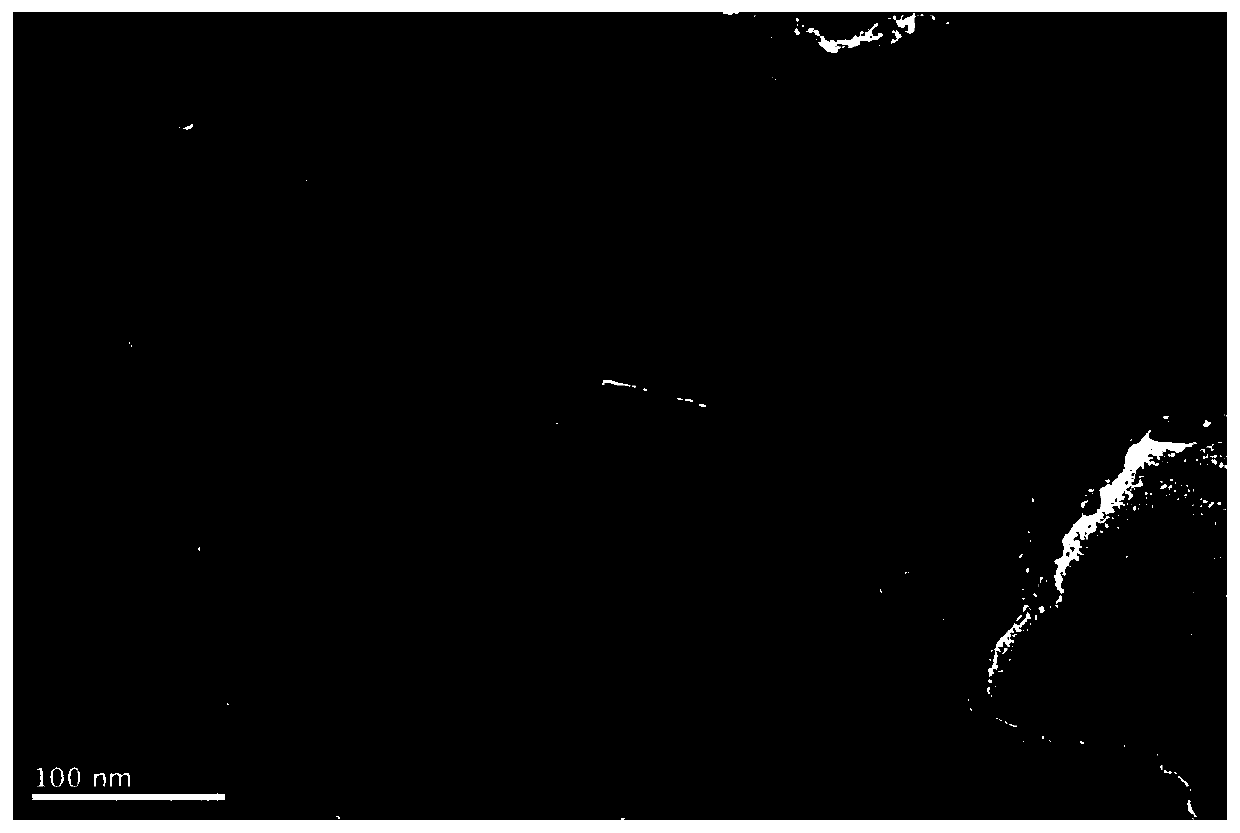A kind of preparation method and application of carbon-based solid acid
A carbon-based solid acid and application technology, applied in chemical instruments and methods, physical/chemical process catalysts, organic chemistry, etc., can solve the problems of high price of ionic liquids and large inorganic acid pollution, and achieve a simple synthesis route and strong industrialization. Meaningful, low-cost effects
- Summary
- Abstract
- Description
- Claims
- Application Information
AI Technical Summary
Problems solved by technology
Method used
Image
Examples
Embodiment 1
[0027] Dissolve 1 g of glucose in 1 mL of deionized water, stir the solution at room temperature for 3 h, add 1.0 g of phosphoric acid (commercially available phosphoric acid contains 85 wt%), stir for 2 h, then dry at 100°C for 24 h, and calcinate in nitrogen atmosphere at 300°C for 4 h. Hours can be used to detect the structure of the catalyst with TEM, the results are as follows figure 1 shown.
[0028] Take 0.2g of the catalyst obtained above, 1.2g of fructose, add 20mL of water and 30mL of sec-butanol, seal, react at 160°C for 3h, filter the reaction solution and detect it with ion chromatography, levulinic acid (LA) and 5-hydroxy The yields of methylfurfural (HMF) were 6.90% and 89.08%, respectively. It can be seen from the experimental results that the phosphorylated carbon-based solid acid has a good effect on catalyzing the conversion of sugar into the platform compound HMF.
[0029] The LA detection conditions are as follows: the mobile phase is 1mM NaOH solution, ...
Embodiment 2
[0031] Dissolve 1g of fructose in 5mL of deionized water, stir the solution at room temperature for 3h, add 1.25g of sulfuric acid, stir for 2h, then dry at 80°C for 24h, and then calcinate in nitrogen atmosphere at 300°C for 4h.
[0032] Get the catalyst 0.2g obtained above, fructose 1.2g, add 20mL water and 30mL sec-butanol, seal, react 180min at 160 ℃, detect with ion chromatography after the reaction solution is filtered, LA and HMF yields are respectively 10.27% and 57.20%.
Embodiment 3
[0034] Dissolve 1g of glucose in 1mL of deionized water, stir the solution at room temperature for 3h, add 0.1g of phosphoric acid, stir for 2h, then dry at 100°C for 12h, and calcine in nitrogen atmosphere at 300°C for 2 hours.
[0035] Get the catalyst 0.2g obtained above, glucose 1.2g, add 20mL water and 30mL sec-butanol, seal, react 180min at 160 DEG C, detect with ion chromatography after filtering the reaction solution, LA and HMF yields are respectively 5.12% and 54.20%.
PUM
 Login to View More
Login to View More Abstract
Description
Claims
Application Information
 Login to View More
Login to View More - R&D
- Intellectual Property
- Life Sciences
- Materials
- Tech Scout
- Unparalleled Data Quality
- Higher Quality Content
- 60% Fewer Hallucinations
Browse by: Latest US Patents, China's latest patents, Technical Efficacy Thesaurus, Application Domain, Technology Topic, Popular Technical Reports.
© 2025 PatSnap. All rights reserved.Legal|Privacy policy|Modern Slavery Act Transparency Statement|Sitemap|About US| Contact US: help@patsnap.com

